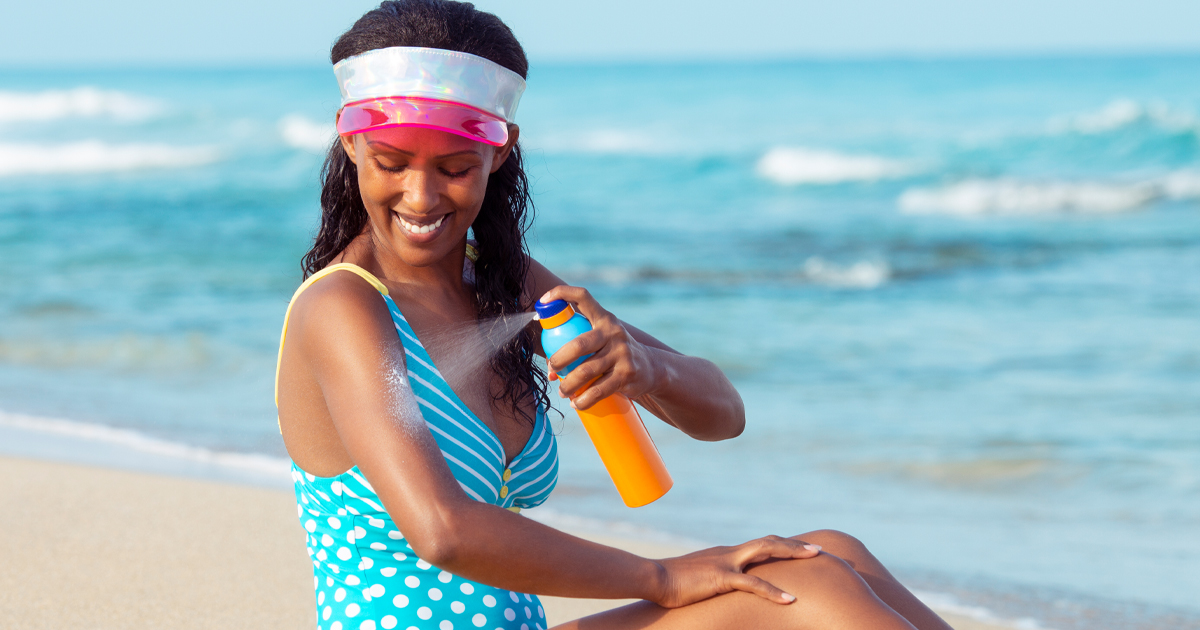Sun safety tips for your family

Southern Africa is a region with year-round exposure to high-level ultraviolet (UV) radiation from the sun – putting us at high risk of skin cancer. We set the record straight on common misconceptions about skin cancer.
According to the Cancer Society of South Africa (CANSA), South Africa has one of the highest skin cancer rates in the world, second only to Australia. Let’s separate the myths from the facts:
MYTH #1
SKIN CANCER IS NOT DANGEROUS
FACT: Although skin cancer can be treated successfully if detected early, malignant melanoma is a very dangerous type of skin cancer. It can cause cancer to spread to other parts of the body, and some forms are very aggressive. It is responsible for 1% of deaths due to cancer.
MYTH #2
MELANOMA IS A VERY RARE FORM OF SKIN CANCER
FACT: Yes, melanoma is not as common as other forms of skin cancer, but the number of melanoma cases is growing worldwide. The World Health Organization (WHO) has cautioned that because of the decrease in the world’s ozone layer (which means more UV radiation), melanoma cases are likely to increase by 4 500 annually.
MYTH #3
MOLES AREN’T AN IMPORTANT RISK FACTOR IN SKIN CANCER
FACT: Changes in the colour and shape of moles can be indicative of the development of skin cancer. Many moles are completely harmless but some do become cancerous. Only 50% of melanomas occur as new moles, so it is important to get changes in existing moles checked early. New moles or marks on the skin, even small ones, should also always be checked by a doctor.

MYTH #4
I’M YOUNG, SO I DON’T HAVE TO WORRY ABOUT KEEPING OUT OF THE SUN. SKIN CANCER ONLY AFFECTS OLDER PEOPLE
FACT: Although skin cancer is more common in older people, as they have had longer exposure to the sun throughout their lives, sun damage can occur at a young age. Sunburn only takes 15 minutes to damage skin, and that damage is permanent and can’t be reversed. Each exposure to the sun adds up. The cancer may only manifest later in life, but melanoma is the second most common cancer in 15 to 19 year olds and the most commonly diagnosed cancer in young adults under 30.
MYTH #5
MELANOMA IS A WHITE PERSON’S DISEASE
FACT: More lighter-skinned people are diagnosed with melanoma because higher levels of natural melanin in darker skin do have a protective effect against sunburn, but anyone can get melanoma. In darker-skinned people, melanoma is common on the palms of the hands or soles of the feet, and in 70% melanoma occurs in the lower limb. A worrying fact is that melanoma is often diagnosed at a later stage (which is more dangerous) in darker-skinned people.
PROTECT YOURSELF AND YOUR FAMILY
- Plan your time outdoors. Avoid high-risk times when the sun is harshest (between 10am and 3pm).
- A beach picnic for breakfast or a late lunch is just as much fun!
- Children’s skin needs more protection. Apply sunscreen with a high sun protection factor (SPF) regularly.
- Wear suitable clothing such as wide-brimmed hats to shield your face and sunglasses to protect your eyes.
- Remember that UV rays reflect off cement, water and even grass so reapply sunscreen even when you’re all in the shade, as well as in overcast weather.
- Check your family’s skin regularly for changes in moles or new spots, and get someone to check your own back, top of your head and places you can’t see.
Related articles

Latest Jet club magazine
We’ve got the latest trends, exciting prizes and exclusive savings just for you!
Jet Club will not pass your details to anyone else. By clicking the subscribe button you confirm you have read and agree to the Jet Club Terms and conditions and Jet Club Privacy Statement.
Subscribe

